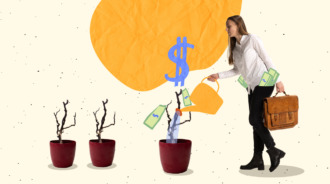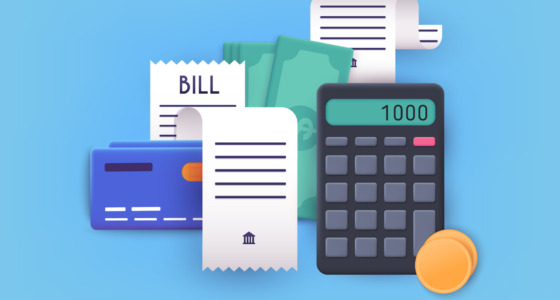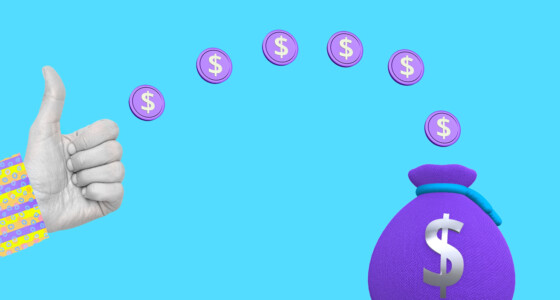

Of all adults with internet access, 71% use social media. Moreover, the average internet user maintains 8.6 social media accounts. The sheer scope of this phenomenon is hard to comprehend.
There is no denying that social media platforms have evolved into hubs of global conversation and sentiment. Plus, they have become a treasure trove of information that shapes market trends and drive investment decisions. Let’s see how they redefined research methodologies for traders on Binomo and elsewhere, as well as elevated the role of real-time, unfiltered opinions.
Shift from traditional research methods to digital platforms

Traditional research methods for traders include:
- Fundamental analysis. Analysts would pore over printed reports, company filings, and financial publications to assess the health and potential of a company.
- Technical analysis. Technical analysts would examine historical price and volume data on printed charts to identify patterns, trends, and potential support and resistance levels.
- Market news and publications. Access to breaking news was more limited, and traders often had to wait until the next publication to get the latest updates.
- Broker and analyst reports. These reports contained insights, recommendations, and analyses on various stocks and investment opportunities.
- Financial news TV and radio. Traders would tune in to financial news broadcasts on television and radio to get updates on market developments with a bit of a delay.
Truth be told, all these traditional research methods are still relevant and important today. But! As technology has become more accessible and user-friendly, traders and analysts have embraced digital platforms.
Research on social media taps into the collective intelligence of a diverse online community, and it helps traders access a wealth of information. This information isn’t always helpful, but distinguishing the signal from the noise is its own skill. The final goal is to harness the immediacy of social media to enhance the accuracy and timeliness of trading research.
What is the benefit to using social media for conducting market research? It’s speed and real-time access, global reach and diversity, sentiment analysis, interactivity and engagement, cost efficiency, and the emergence of influencers.
Engaging with trading communities
Social media is a place where traders from all over the world come together to talk business. Everyone feels like a part of a live conversation where they can learn about what’s happening in the market right away. Traders can ask questions, get advice, and share their own ideas.
When traders face challenges or uncertainties, they can turn to these online communities for help. In a profession that often involves working independently (almost in isolation), it’s nice to have a supportive team that can provide guidance and suggestions based on their own experiences.
For instance, you notice a sharp and sudden drop in the stock price of a well-known tech company and post about it. In the responses to your post, some mention that there’s breaking news about a major security breach. Others suggest that the drop might be due to profit-taking after a prolonged bullish trend. And when someone points out that a regulatory agency had just announced an investigation into the company’s business practices, it all falls into place.
Following industry influencers
If you happen to come across experts in the trading and financial fields with a track record of making accurate predictions and offering valuable analysis, great! They can be the source of immediate updates on crucial developments that may impact your trades. Or you can use their content to enhance your general understanding of the trading world.
But just as one would validate advice from peers, it’s essential to critically assess the reliability of sources in this dynamic digital ecosystem. The fact that someone has a large online following or claims to be an expert doesn’t automatically guarantee the accuracy of their insights.

Accessing free educational resources
Thanks to the internet and social media, people witness the democratization of education and how it’s breaking down traditional barriers. Now, individuals from diverse backgrounds get to engage in high-quality learning experiences.
The essence of social media’s impact is that knowledge isn’t unhindered by cost or location. Through these platforms, seasoned traders and experts disseminate what they know in easily digestible formats. Short videos, concise posts, and informative articles all go through the intricacies of trading strategies, risk management, market analysis, etc. This exchange mirrors a mentorship dynamic from the past when expertise was shared in person.
Different use social media platforms for different types of research

In this section, let’s delve into the multifaceted applications of social media for traders on three pivotal platforms.
X (Twitter)
X is a powerful platform for:
- News and updates — financial news outlets, market commentators, and official accounts of companies and organizations to stay updated on breaking news and market developments.
- Market insights — seasoned traders, economists, and analysts who share their analyses and trading strategies.
- Sentiment analysis — trending hashtags, discussions, and sentiment-related keywords to gauge public sentiment toward specific assets or events.
- Networking — other traders and industry professionals to exchange ideas, strategies, and experiences.
By the way, the Binomo World account has a diverse selection of posts, from advice to fun facts. Also, if there are any important updates on the platform, you’ll be the first to know.
YouTube
Traders use YouTube for:
- Educational videos — tutorials and webinars on trading strategies, technical analysis, risk management, and other relevant topics. For this type of content, make sure to check out Binomo’s channel.
- Technical analysis — videos that explain chart patterns, candlestick analysis, and other technical indicators.
- Market commentary — real-time (or at least recent) commentary on market trends, news, and potential trading opportunities.
- Expert interviews — interviews with industry experts, economists, and successful traders who share their perspectives on the markets.
LinkedIn offers traders a space for:
- Professional networking — fellow traders, industry professionals, and potential mentors.
- Industry insights — leaders and influencers who share articles, analyses, and posts related to financial markets and trading.
- Sharing expertise — establishing yourself as a knowledgeable professional in the field.
- Recruitment and collaboration— potential job opportunities in the financial sector and collaborating with professionals from diverse backgrounds.
Other
Instagram and Telegram are valuable resources for trading insights and awareness, too. For example, Binomo’s Instagram is packed with engaging content, including quick strategy explainers, memes, and exclusive promo codes. As for Telegram, you’ll find video and audio content for learning, along with bite-sized posts from real traders.
Mitigating information overload and misinformation
Social media platforms allow information to spread rapidly and widely, mostly without thorough fact-checking. If there are false rumors, misleading claims, and inaccurate analyses going viral, they can have profound effects on financial markets and individual investors. By the time you realize that, the damage may already be done.
Another challenge comes from the sheer volume of data coming through social media. There is market noise, volatility amplification, confirmation bias, and plain data overwhelm.
Source evaluation and curation
Relying on a variety of reputable sources helps you avoid getting a one-sided view of the situation. Consider using a mix of financial news outlets, official reports, expert analyses, and industry publications. And before making decisions, cross-reference the information you do find with multiple other sources.
Critical thinking and analysis
Approach information with a critical mindset — ask questions about the source, motives, and evidence behind the information to ensure it’s reliable and well-founded. Also, having a predefined strategy can help you filter out irrelevant or conflicting information for better analysis.
Data management and technology
Consider leveraging technology like data analytics, sentiment analysis, and AI-driven tools that can process and filter information. These tools help identify trends and patterns in large datasets.
Decision-making and reflection
Take the time to verify, analyze, and reflect before acting instead of making hasty decisions. And then document your decision-making process, including the information you considered from social media. This journal will help you review your strategies over time.
The final takeaway for you is this: with great potential comes the responsibility to use social media wisely. When you’re making trading decisions on Binomo, only incorporate social media insights into your existing trading strategy as supplementary information.
Sources:
How to use social media for international market research, LinkedIn
Trading and social media, Charles Schwab
Information overload and fake news sharing, ResearchGate










